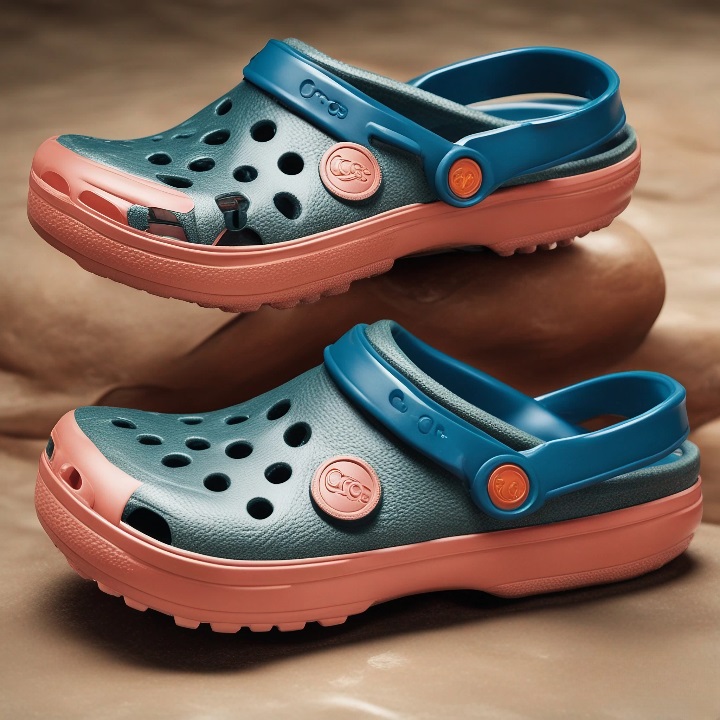Water shoes are a type of footwear that are designed to be worn in or near water. They are usually made of quick-drying, breathable, and lightweight materials that can protect your feet from sharp objects, hot surfaces, or slippery rocks. Water shoes are useful for various water activities, such as white water rafting, swimming, kayaking, boating, fishing, hiking, water aerobics, or beach walking. Crocs are made of a water-resistant and easy to clean material called Croslite, which is also buoyant and light.
QUICK ANSWER
Are Crocs water shoes? Crocs can be used as water shoes for some situations where grip and ankle support are not crucial. They are cheap, it doesn’t matter if you get them wet, and they stand up to even hard usage. However, they may not be suitable for more challenging or adventurous water activities that require more traction, protection, or comfort. In those cases, you may want to look for specialized water shoes that are designed for your specific needs.
If you’re looking for a quick recommendation, we suggest the following three Crocs products as water shoes:
- Crocs Classic Clogs: The iconic and timeless design of Crocs Classic Clogs makes them an excellent choice for casual water activities. Their Croslite material provides water resistance, and the lightweight construction ensures they won’t weigh you down in the water.
- Crocs Swiftwater Sandals: For those seeking a more breathable option, Crocs Swiftwater Sandals combine comfort with quick-drying capabilities, making them perfect for beach trips or water sports. They are also great for people with wide feet!
- Crocs LiteRide Pacer Sneakers: These sneakers are a versatile choice for both water and land activities. With their foam insoles and water-resistant material, they strike a balance between support and style.
Are Crocs Good Water Shoes?

To answer this question, we need to consider the pros and cons of using Crocs as water shoes, based on the following criteria:
Material
Crocs are crafted from a unique water-resistant material called Croslite. This feature makes them ideal for water-related activities as they won’t absorb water, leading to quicker drying times. Their buoyant and lightweight nature further adds to their appeal for water use.
However, some Crocs models come with holes or vents that may inadvertently let water and sand in, which might be a drawback for certain water sports or terrains.
Grip
Crocs are equipped with a textured sole that offers some traction on wet surfaces, making them suitable for casual water activities like a leisurely walk on the beach.
However, for more challenging and slippery surfaces, the grip may not be sufficient. Additionally, while some Crocs models have a heel strap for added security, others may not offer the same level of support, causing them to slip off easily during dynamic water activities.
Support
The molded footbed in Crocs conforms to your feet, providing moderate arch support. This can be beneficial for short water strolls or casual swimming.
However, for more extended walks or hikes, some users may find the cushioning and stability inadequate. Additionally, certain Crocs models have a toe box that offers protection against potential stubbing, but this may not be the case for all styles.
Can Crocs Be Used as Water Shoes?

Based on the pros and cons we discussed above, we can conclude that Crocs can be used as water shoes for some situations where grip and ankle support are not crucial. However, they may not be suitable for more challenging or adventurous water activities that require more traction, protection, or comfort. In those cases, you may want to look for specialized water shoes that are designed for your specific needs.
Do Crocs Count as Water Shoes?

To answer this question, we need to explain the difference between water shoes and other types of footwear that can be worn in water, such as sandals, flip flops, or sneakers.
Water shoes are a type of footwear that are designed to be worn in or near water. They have the following features:
- They are made of quick-drying, breathable, and lightweight materials that can resist water damage and prevent fungal growth.
- They have a snug and secure fit that can prevent them from slipping off or getting stuck in the water.
- They have a textured and flexible sole that can provide good grip and traction on wet and slippery surfaces.
- They have a cushioned and supportive footbed that can provide comfort and stability for your feet.
- They have a protective and closed toe box that can prevent your toes from stubbing or injury.
When compared to traditional sandals or flip flops, we can see that Crocs count as water shoes because they meet the basic requirements of being water-resistant, lightweight, and easy to wear.
That said, they are not the best water shoes because they lack some features that other types of footwear may have, such as better grip, support, or protection. Therefore, depending on your preferences and activities, you may want to choose a different type of footwear that suits you better.
Final Thoughts
In conclusion, Crocs can be considered water shoes for specific scenarios where their water-resistant material and comfort suffice for leisurely water activities. Their affordability and ease of maintenance make them appealing options for casual water use.
However, for more intense water adventures or situations where superior grip, protection, and support are necessary, it is advisable to invest in specialized water shoes designed explicitly for those purposes. So far, we have reviewed many different water shoes, including Reef Water Coast, Crocs, Watlevs, Sperry Top-Siders, Hey Dudes, Aleader, Nortiv 8, Tevas, VIFUUR, Ubfen, Chacos, Body Glove, and Racqua. By considering the type of water activity, environment, fit, and style preferences, you can find the perfect pair of water shoes to enhance your water-based experiences and keep your feet happy and safe.
